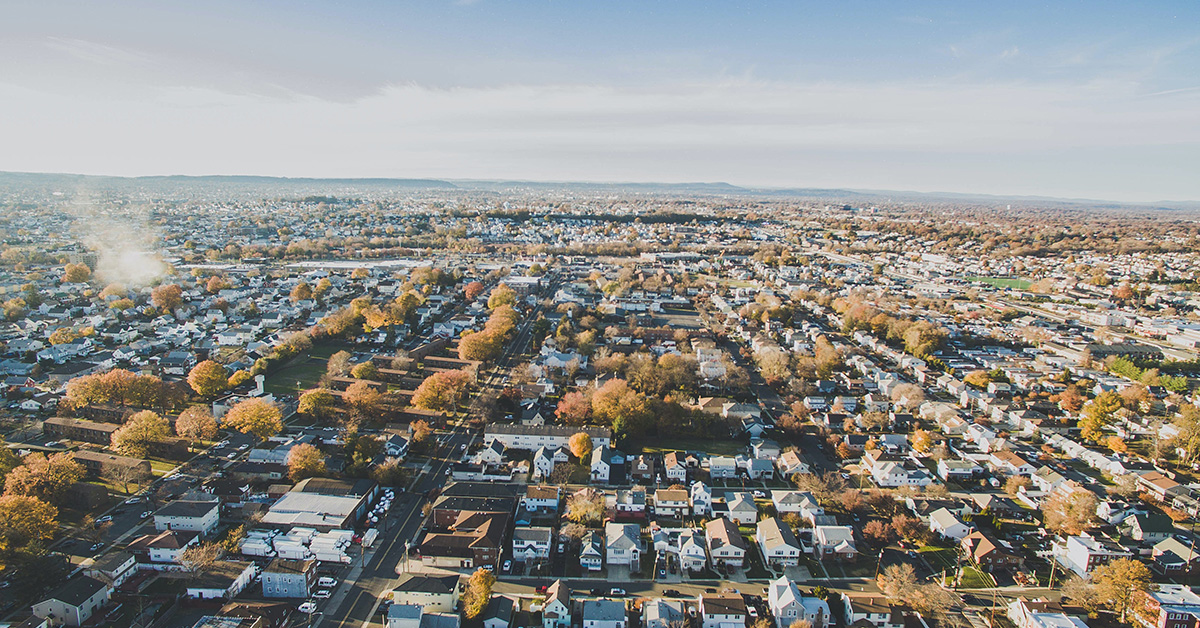What Is the Internet of Things (IoT)?
The Internet of Things (IoT) describes the network of physical objects that are embedded with sensors, software, and other technologies for the purpose of connecting and exchanging data with other devices and systems.
Interconnected via the internet, these devices range from fairly ordinary household objects to super sophisticated industrial tools found in large cities throughout the globe. These account for more than 7 billion connected IoT devices today, with some experts expecting this number to grow to 22 billion by 2025.
IoT has become one of the most important technologies for 21st-century urban planning. Since we are now able to connect everyday objects—kitchen appliances, thermostats, baby monitors—to the internet via embedded devices, it stands to reason that city planners would also take advantage of seamless communication to improve waste management on a large scale.
Internet of Things Improving Smart City Life
The Internet of Things has become a necessary component in regards to the creation of more efficient, sustainable, livable, and resilient cities. Its growing impact illustrates the growing influence this will have on both people and planetary life for generations to come.
Since 1950, the number of people living in cities has risen from almost 751 million to over 4 billion in the second decade of the Twenty-First Century— in other words, more than half of the planet’s population.
Over the next three decades, projections are that cities will add yet another 2.5 billion more people. To keep up with the influx of humanity into smaller and denser areas, cities around the globe are expected to spend around $50 trillion on IoT technologies in the next 20 years.
This perpetual migration to urban areas puts greater pressure on public services such as the collection and disposal of waste. As a result, cities are implementing solutions driven by technology and data to reduce the added strain created by this growth.
Smart Technology in Waste Management
 Although waste management collection is traditionally a low-level, labor-intensive service, IoT companies are developing multiple two-way communication tools to efficiently reduce labor and increase the productivity of waste management systems. Relevant products such as sensor-enabled trash receptacles measure waste levels in public bins and compact trash to reduce overflow. The bins share the data with local authorities, allowing them to enhance efficiency by planning collection routes where and when pickup is needed. Not only does this help improve the visual aspects of streets, but it is also pertinent in regards to pest control.
Although waste management collection is traditionally a low-level, labor-intensive service, IoT companies are developing multiple two-way communication tools to efficiently reduce labor and increase the productivity of waste management systems. Relevant products such as sensor-enabled trash receptacles measure waste levels in public bins and compact trash to reduce overflow. The bins share the data with local authorities, allowing them to enhance efficiency by planning collection routes where and when pickup is needed. Not only does this help improve the visual aspects of streets, but it is also pertinent in regards to pest control.
Garbage Pick-Up Goes Electric
Electric garbage truck vehicle use is steadily rising due to increased demand by city planners. The resulting trucks are efficient, quiet, and deliver many benefits by receiving power from battery packs as opposed to diesel-powered vehicles, which spew noxious fumes. Replacing traditional garbage trucks with electric ones would reduce fuel consumption by 67 percent and vehicle maintenance costs by roughly $25,000 each year.
RFID Tags in Garbage Collection
 Radio Frequency Identification (RFID) tags are a type of tracking system which uses smart barcodes in order to identify items. These radio waves transmit data from the tag to a reader, which then transmits the information to an RFID computer program.
Radio Frequency Identification (RFID) tags are a type of tracking system which uses smart barcodes in order to identify items. These radio waves transmit data from the tag to a reader, which then transmits the information to an RFID computer program.
RFID tags are frequently used for merchandise, but they can also be used to track vehicles. In order to reduce waste, RFID tags have been introduced in numerous urban environments to provide city residents with a pay-as-you-throw garbage collection fee.
Advancing the waste management industry by infusing modern technology with IoT technology such as RFID tags into the transportation and storage of refuse reduces costs and contributes to creating more sustainable urban environments.
KenBay RotoPac IoT Technology for Waste System Integrators
Over the past 15 years, the Kenbay RotoPac has been used extensively to compact waste from various trim and pneumatic systems. Today’s smart RotoPac is even easier to use by systems integrators and OEMs with the new HMI interface.
PLC provides relays that allow the RotoPac to automatically synch up with other types of machinery such as conveyors, blowers, trim removal systems, vacuums, and associated pneumatic equipment.
OEM & Systems Integrators can take advantage of the flexibility of the KenBay RotoPac industrial waste disposal unit to extend the capabilities of other waste-related machines and reduce the cost of waste removal from cities that rely on smart city technology.
Easy interconnectivity between intelligence devices such as photo eye triggers and HMI viewscreens proves invaluable in reducing power consumption and man-hours. This is why more and more waste planners are turning to the KenBay Industrial Waste Compactor.



